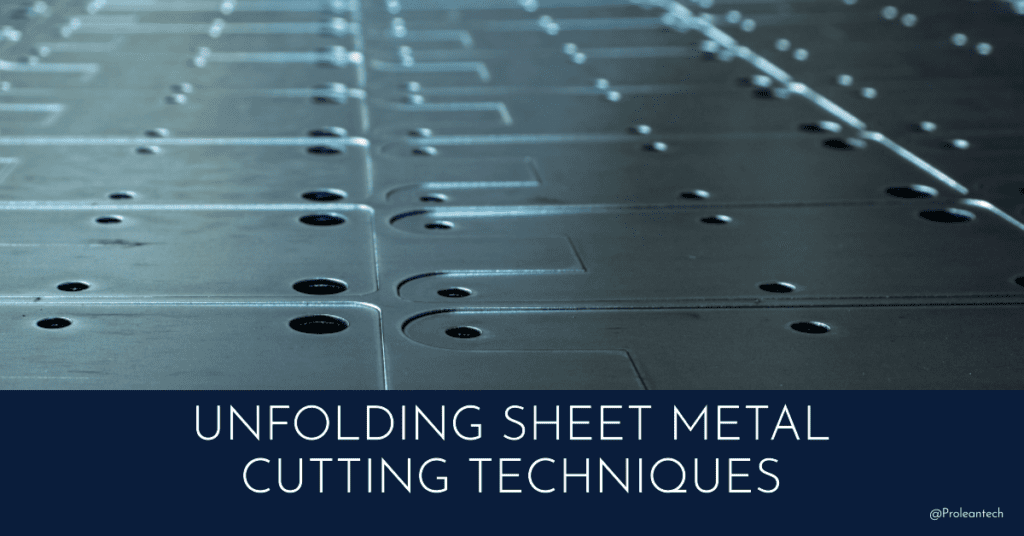
Sheet metal cutting is a fundamental process in the manufacturing industry, enabling the creation of specific shapes and sizes needed for a variety of products and components. From cars and appliances to machinery and building materials, sheet metal cutting plays an essential role in producing countless items we use daily.
Different cutting methods like laser cutting, shear-cutting, plasma cutting, etc offer unique advantages and are suitable for distinct applications, depending on factors like precision, material type, and production volume. Understanding these methods can help manufacturers choose the best approach for their specific needs, optimizing efficiency, quality, and cost-effectiveness.
This article will describe the various methods of sheet metal cutting used in manufacturing, including their working principles, advantages, and applications.
Traditional Sheet Metal Cutting Techniques
The historical roots of metal cutting trace back to traditional methods, which still find widespread use today. These techniques, including shearing, punching, and sawing, are predominantly mechanical in nature and rely on direct physical force to shape and size sheet metal. Let’s delve deeper into each of these.
1. Shearing
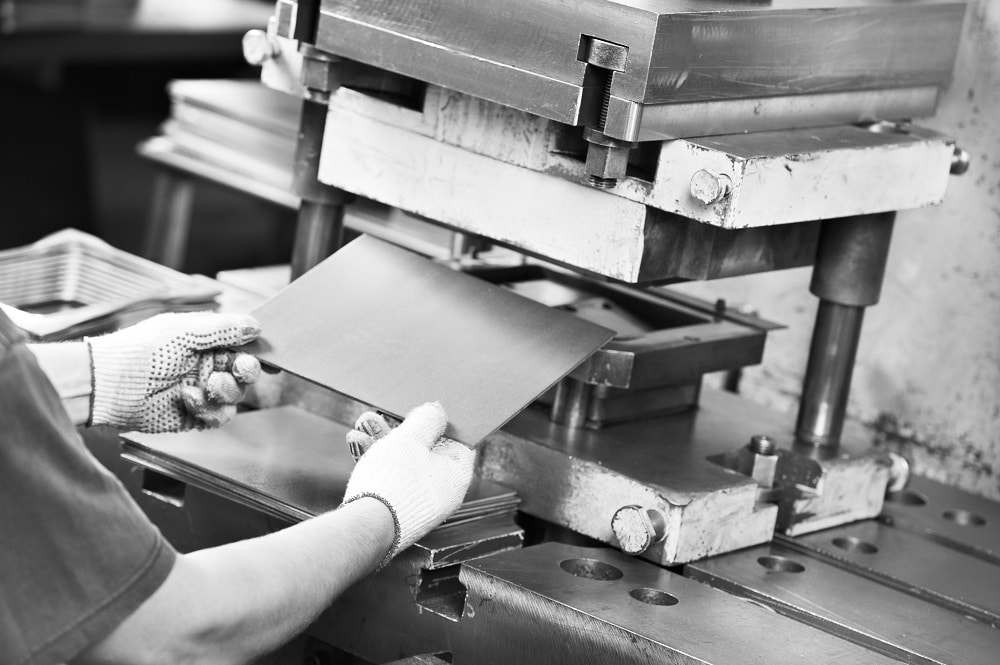
Shearing is one of the oldest and simplest cutting techniques. A machine, often hydraulic or pneumatic, uses two blades—one fixed, the other moving—to apply a large cutting force to the sheet metal. The metal breaks under the strain, separating into distinct pieces.
Key Features of Shearing:
- Straight line cuts: Shearing is excellent for producing straight cuts, ideal for simple shapes.
- High speed: The process is quick, making it suitable for large volume jobs.
- Economical: As shearing equipment is relatively inexpensive and the process straightforward, the technique can be quite cost-effective.
However, the main disadvantage of shearing is that it can distort the metal around the cut, making it less suitable for applications requiring high precision.
2. Punching
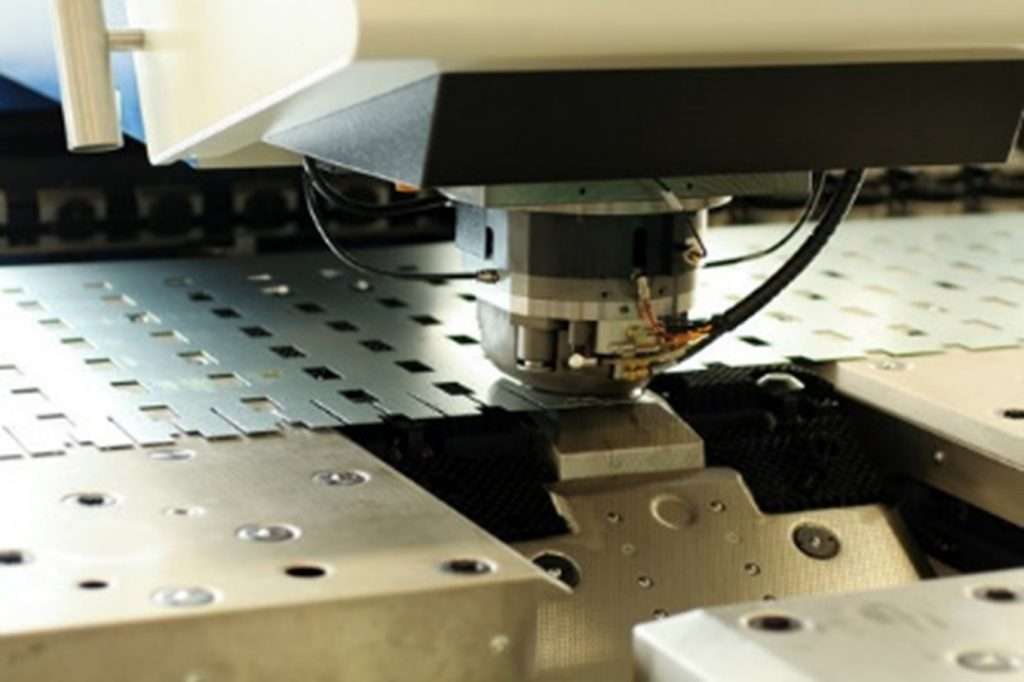
Punching works by forcing a tool, the punch, through sheet metal to create a hole. The process is akin to using a hole punch on a piece of paper, albeit on a much larger scale and requiring much greater force.
Key Features of Punching:
- Speed and efficiency: Punching can create numerous identical holes quickly, perfect for repetitive tasks.
- Versatility: The shape and size of the hole depend on the punch used, allowing for different hole designs.
On the downside, similar to shearing, punching can also distort the material around the holes, which can affect the overall integrity and aesthetics of the final product.
3. Sawing
Sawing employs a toothed blade to cut sheet metal. The blade, either manual or powered, moves back and forth rapidly, each tooth chipping away a small piece of the metal with each stroke.
Key Features of Sawing:
- Adaptability: Sawing is a versatile method that can handle a range of thicknesses and hardness.
- Precision: Despite its age, sawing can still provide fairly accurate cuts, depending on the blade used.
However, sawing can be slower than other methods, and the finish may not be as smooth. Furthermore, the process can generate a lot of heat, which may need to be managed to prevent the metal from warping.
Table 1: Comparison of Traditional Sheet Metal Cutting Techniques
| Technique | Advantage | Disadvantage |
|---|---|---|
| Shearing | Economical, Fast | Can distort material |
| Punching | Quick for repetitive tasks, Versatile hole shapes | Can distort material |
| Sawing | Versatile, Precise | Slow, May not provide smooth finish, Generates heat |
Advanced Sheet Metal Cutting Techniques
While traditional cutting techniques have served the manufacturing industry well, there has been a rise in the adoption of advanced techniques. Thanks to the exponential growth of technology, we have seen the introduction of laser cutting, plasma cutting, and waterjet cutting. These methods harness the power of high energy sources and precision control to deliver speed, accuracy, and efficiency in sheet metal cutting.
1. Laser Cutting
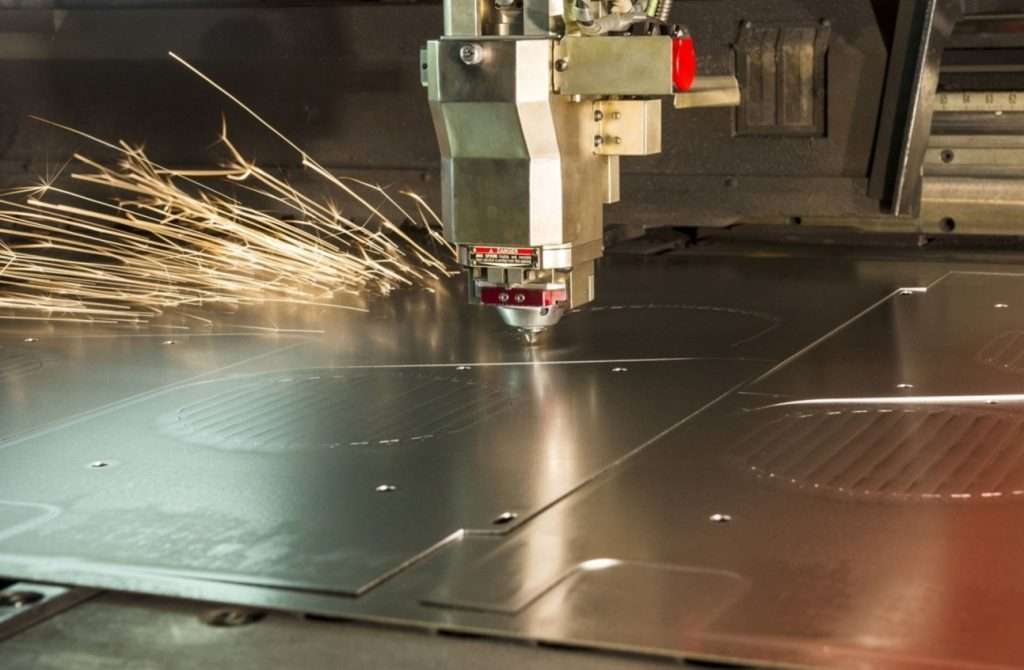
As we discussed in our previous article, laser cutting harnesses the power of a concentrated laser beam to cut through sheet metal. The laser vaporizes the metal, creating a precise, clean cut. Laser cutting technology has gained popularity due to its precision and efficiency.
Key Features of Sheet Metal Laser Cutting:
- Precision: Laser cutting can achieve highly accurate cuts, even for complex shapes.
- Speed: Due to the concentrated energy of the laser, this method is incredibly fast.
- No Physical Contact: Since the laser beam does not physically touch the material, there’s no risk of mechanical distortion.
However, laser cutting can be more costly than traditional methods and requires proper safety measures due to the high energy involved.
2. Plasma Cutting
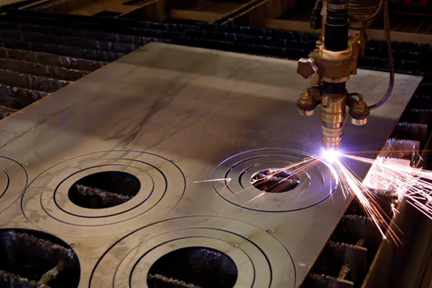
Plasma cutting uses a stream of high-velocity ionized gas, or plasma, to cut through sheet metal. The plasma heats and melts the metal, blowing away the molten material to form a cut.
Key Features of Plasma Cutting:
- Versatility: Plasma cutting can be used on any metal that conducts electricity.
- Speed: The method is faster than traditional techniques for thick materials.
From this, we can see the difference between plasma cutting and laser cutting. The main disadvantage is that plasma cutting may not deliver as precise cuts as other advanced methods, such as laser cutting.
3. Waterjet Cutting
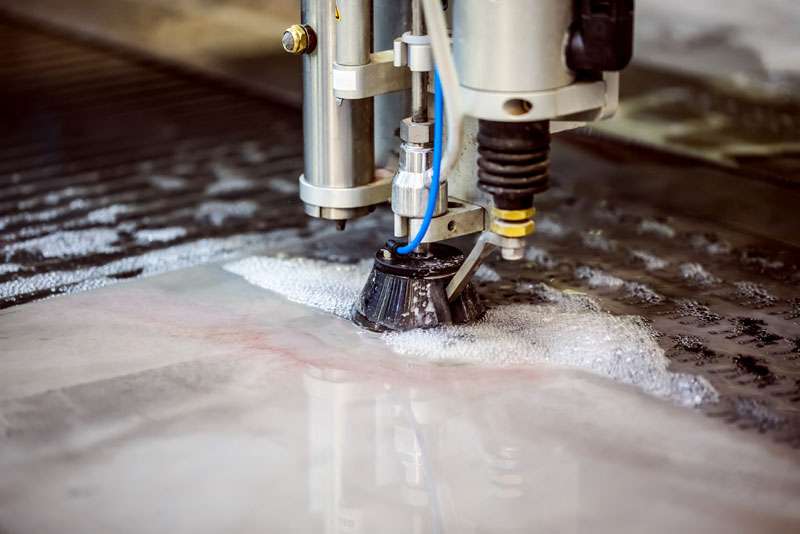
Waterjet cutting uses a high-pressure stream of water, sometimes mixed with abrasive materials, to cut through sheet metal. The waterjet erodes the metal, creating a cut.
Key Features of Waterjet Cutting:
- Versatility: Waterjet cutting can be used on a wide variety of materials, not just metal.
- No Heat-Affected Zones (HAZ): Since the process doesn’t produce heat, there’s no risk of heat-induced distortion or changes in material properties.
The drawback of waterjet cutting is that it can be slower and less precise than laser and plasma cutting.
Table 2: Comparison of Advanced Sheet Metal Cutting Techniques
| Technique | Advantage | Disadvantage |
|---|---|---|
| Laser Cutting | Highly precise, Fast, No physical contact | More costly, Requires safety measures |
| Plasma Cutting | Versatile, Fast for thick materials | Less precise |
| Waterjet Cutting | Versatile, No HAZ | Slower, Less precise |
The Role of Software in Sheet Metal Cutting
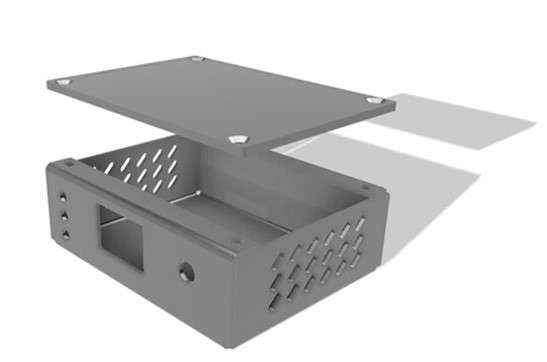
With the integration of digital technologies in manufacturing processes, software plays an increasingly crucial role in sheet metal cutting. From designing the cut to controlling the cutting machine, software provides unprecedented precision and efficiency.
1. Computer-Aided Design (CAD) Software
In the planning phase, engineers use CAD software to design the sheet metal part. The software allows engineers to create 3D models of the part, which provides a comprehensive understanding of the design. It’s a critical tool for visualizing the final product and planning the cutting process accordingly.
2. Computer-Aided Manufacturing (CAM) Software
Once the design phase is complete, CAM software comes into play. This software uses the design data to control the cutting machine, ensuring the cuts are executed precisely as planned. With CAM, manufacturers can automate the cutting process, reducing human error and increasing efficiency.
3. Nesting Software
Nesting software is a specialized type of CAM software used in sheet metal cutting. The software takes multiple part designs and organizes them onto a single sheet of metal in a way that minimizes waste. This step is critical for optimizing material usage and reducing costs.
Table 3: Role of Software in Sheet Metal Cutting
| Software | Role |
|---|---|
| CAD | Designing the part and planning the cut |
| CAM | Controlling the cutting machine based on the design data |
| Nesting | Organizing multiple parts on a single sheet to minimize waste |
Choosing the Right Cutting Method
With a range of sheet metal cutting techniques available, choosing the right method for your project can be a challenge. The best choice depends on several factors, including the type of metal, the thickness of the sheet, the desired cut quality, and your budget.
For instance, shearing might be the most cost-effective method for simple projects involving thin sheets of metal. However, for complex designs or thicker sheets, you might need to consider more advanced techniques like laser or plasma cutting.
To make the best choice, consider consulting with an experienced manufacturing partner like Prolean. They can advise you on the best cutting method for your specific needs and help ensure a high-quality, efficient production process.
Table 4: Factors to Consider When Choosing a Cutting Method
| Factor | Consideration |
|---|---|
| Type of Metal | Some methods are better suited to certain types of metal. |
| Thickness | Thick sheets may require more advanced cutting techniques. |
| Cut Quality | If you need a very precise or smooth cut, consider methods like laser cutting. |
| Budget | Consider the cost of the cutting method and how it fits into your budget. |
Advancements in Sheet Metal Cutting
With continuous technological advancements in the manufacturing industry, sheet metal cutting has evolved significantly over the years. These developments are not only leading to improved cut quality and efficiency but are also enabling manufacturers to take on more complex projects.
1. Automation
Automation is one of the most significant advancements in sheet metal cutting. With automated cutting machines, manufacturers can deliver precise cuts at a high speed, leading to improved productivity. Automated machines can also operate with minimal human intervention, reducing the risk of errors and ensuring consistency in the cutting process.
2. Digital Technology
Digital technology has revolutionized sheet metal cutting. From CAD/CAM software to digital cutting machines, digital technology has increased the precision and efficiency of the cutting process. It’s now possible to execute complex cuts that would have been difficult, if not impossible, with traditional manual cutting techniques.
Table 5: Technological Advancements in Sheet Metal Cutting
| Advancement | Impact |
|---|---|
| Automation | Increased productivity and consistency |
| Digital Technology | Enhanced precision and efficiency |
Conclusion
Sheet metal cutting is a vital process in the manufacturing industry. From traditional methods like shearing and punching to advanced techniques like laser cutting and water jet cutting, manufacturers have a range of options to choose from. With the integration of digital technology and automation, sheet metal cutting is becoming more precise, efficient, and versatile.
By choosing a reliable manufacturing partner like Prolean’s laser cutting services, you can leverage these advancements to achieve the best possible results for your project.
FAQs
What factors should I consider when choosing a sheet metal cutting method? The type of metal, the thickness of the sheet, the desired cut quality, and your budget are key factors to consider. Consult with an experienced manufacturer to determine the best method for your needs.
How has digital technology improved sheet metal cutting? Digital technology, such as CAD/CAM software and digital cutting machines, has increased the precision and efficiency of sheet metal cutting. It allows for the execution of complex cuts and enhances productivity.
How does automation benefit the sheet metal cutting process? Automation improves productivity by allowing for high-speed, precise cuts. It also reduces the risk of human error and ensures consistency in the cutting process.
Why is sheet metal cutting important in manufacturing? Sheet metal cutting is essential for creating parts in many industries, including automotive, aerospace, and electronics. It’s a versatile process that allows for the production of a wide range of shapes and sizes.
What is the role of software in sheet metal cutting? Software plays a critical role in both the design and execution of the cut. CAD software is used for designing the part, CAM software controls the cutting machine, and nesting software optimizes material usage.
What advancements have been made in sheet metal cutting? Significant advancements include automation and digital technology, which have improved precision, efficiency, and productivity in the cutting process.




Mir gefällt das Schneiden mit Plasma sehr gut. Besonders die Geschwindigkeit finde ich sehr überzeugend. So kann man schnell und viele Produkte herstellen. Ich kann mir gut vorstellen, dass das bei Serienproduktionen häufig genutzt wird.
Sie haben absolut recht! Plasmaschneiden ist aufgrund seiner Geschwindigkeit und Präzision bei vielen Produktionsprozessen, insbesondere bei Serienproduktionen, sehr beliebt. Es ermöglicht nicht nur schnelle Produktion, sondern auch hohe Qualität und Detailtreue. Es freut uns, dass Sie die Vorteile des Plasmaschneidens schätzen. Wenn Sie weitere Informationen oder Tipps zum Thema wünschen, stehen wir Ihnen gerne zur Verfügung.